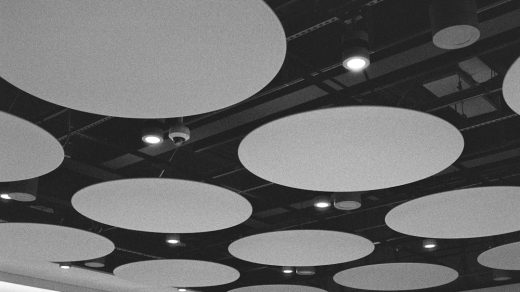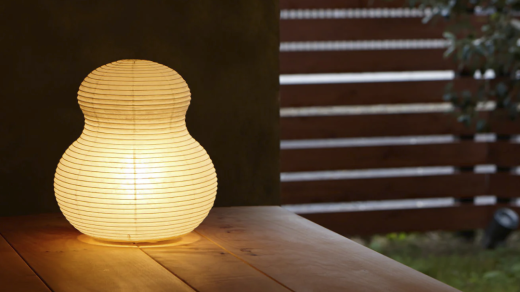The dining room serves as a central hub for family gatherings, celebrations, and intimate dinners, making the choice of lighting a crucial aspect of its design. Traditional dining room lighting is not merely functional; it plays a significant role in setting the mood and enhancing the overall aesthetic of the space. The right lighting can transform a simple meal into a memorable experience, creating an inviting atmosphere that encourages conversation and connection.
In traditional settings, lighting fixtures often reflect classic design principles, incorporating elements such as symmetry, ornate details, and warm tones that evoke a sense of comfort and elegance. When considering traditional dining room lighting, it is essential to understand the various types of fixtures available and how they can complement the room’s decor. From grand chandeliers that serve as statement pieces to subtle sconces that provide ambient light, each type of fixture contributes to the overall ambiance.
The interplay of light and shadow can highlight architectural features, artwork, and table settings, enhancing the dining experience. As we explore the different lighting options available for traditional dining rooms, we will delve into their unique characteristics and how they can be harmoniously integrated into your home.
Chandeliers: The Focal Point of the Dining Room
Chandeliers have long been regarded as the quintessential centerpiece of traditional dining room lighting Renomii. These elaborate fixtures often feature multiple arms adorned with decorative elements such as crystals, glass shades, or intricate metalwork. A well-chosen chandelier not only illuminates the dining table but also serves as a striking visual anchor that draws the eye upward, creating a sense of grandeur in the space.
The height at which a chandelier is hung is crucial; it should be low enough to provide adequate light for dining but high enough to avoid obstructing views across the table. In addition to their aesthetic appeal, chandeliers come in a variety of styles that can complement different traditional themes. For instance, a classic crystal chandelier exudes opulence and sophistication, while a wrought iron design may evoke a rustic charm.
The choice of materials and finishes can further enhance the overall decor, allowing homeowners to express their personal style. When selecting a chandelier for a traditional dining room, it is essential to consider the size of the room and the table to ensure that the fixture is proportionate and enhances the overall balance of the space.
Sconces: Adding Warmth and Ambiance
Wall sconces are another essential element in traditional dining room lighting, providing both functional illumination and decorative flair. These fixtures are typically mounted on walls and can be used to create layers of light that enhance the overall ambiance of the room. Sconces can be strategically placed to highlight architectural features or artwork, adding depth and interest to the space.
Their ability to cast soft, diffused light makes them ideal for creating a warm and inviting atmosphere that encourages relaxation and conversation during meals. The design of sconces can vary widely, from ornate candle-style fixtures to more contemporary designs that incorporate glass or metal elements. In traditional settings, sconces often feature intricate detailing, such as scrollwork or floral motifs, which can echo other design elements in the room.
When selecting sconces for a dining room, it is important to consider their placement and height to ensure they provide adequate illumination without overwhelming the space. By combining sconces with other lighting sources, such as chandeliers or pendant lights, homeowners can achieve a well-balanced lighting scheme that enhances the dining experience.
Pendant Lights: Versatile and Stylish
Pendant lights have gained popularity in recent years as a versatile option for traditional dining room lighting. These fixtures hang from the ceiling and come in various shapes, sizes, and styles, making them suitable for a range of design aesthetics. Pendant lights can be used alone or in clusters above a dining table to create a visually striking arrangement that adds character to the space.
Their ability to provide focused light makes them ideal for illuminating specific areas, such as a dining table or buffet. One of the advantages of pendant lights is their adaptability; they can easily blend with traditional decor while also offering a modern twist. For instance, a vintage-inspired pendant with an antique finish can complement classic furnishings, while a sleek glass pendant may introduce a contemporary element without detracting from the overall traditional theme.
When choosing pendant lights for a dining room, it is essential to consider the height at which they will be hung to ensure they provide adequate illumination without obstructing views or creating an overwhelming visual presence.
Candlelight: A Classic and Romantic Option
Candlelight has long been celebrated as one of the most romantic and timeless forms of lighting for dining rooms. The soft glow of candles creates an intimate atmosphere that enhances the dining experience, making meals feel special and memorable. Whether used as a primary light source or as an accent to other fixtures, candles add warmth and charm that cannot be replicated by electric lighting alone.
They can be placed on the dining table, in sconces, or even within decorative lanterns to create a cozy ambiance. Incorporating candlelight into traditional dining room decor allows for endless creativity. From elegant candelabras that serve as stunning centerpieces to simple votive candles arranged in clusters, there are numerous ways to utilize candles effectively.
Additionally, scented candles can enhance the sensory experience by adding delightful fragrances that complement the meal being served. When using candles in a dining room setting, it is important to consider safety; ensuring they are placed securely away from flammable materials and monitored during use will help maintain a safe environment while enjoying their enchanting glow.
Crystal Lighting: Adding a Touch of Glamour
The Luxury of Crystal Lighting Fixtures
Crystal lighting fixtures are synonymous with luxury and elegance, making them an excellent choice for traditional dining rooms seeking to make a statement. These fixtures often feature intricate designs that showcase sparkling crystals or glass elements, reflecting light in captivating ways that enhance the overall ambiance of the space.
Crystal Chandeliers: Elevating Formal Dining Settings
Crystal chandeliers are particularly popular in formal dining settings, where their opulent appearance can elevate even the simplest meals into extraordinary occasions. Their grandeur and sophistication create an atmosphere that is perfect for special events and gatherings.
Crystal Accents in Lighting Fixtures
Beyond chandeliers, crystal accents can be incorporated into various lighting fixtures throughout the dining room. Wall sconces adorned with crystal embellishments or pendant lights featuring crystal drops can create a cohesive look that ties together different elements of the decor. The interplay between light and crystal creates an enchanting atmosphere that captivates guests and adds an air of sophistication to any gathering.
Creating a Harmonious Balance
When selecting crystal lighting for your dining room, consider how these fixtures will interact with other design elements in the space to ensure a harmonious balance. By carefully choosing the right crystal lighting fixtures, you can create a beautiful and elegant atmosphere that enhances the overall aesthetic of your dining room.
Traditional Lampshades: Timeless and Sophisticated
Lampshades are often overlooked in discussions about dining room lighting; however, they play an essential role in creating a warm and inviting atmosphere. Traditional lampshades come in various shapes and materials, allowing homeowners to customize their lighting according to their personal style and preferences. Fabric shades in rich colors or intricate patterns can soften harsh light while adding texture and visual interest to the room.
Incorporating lamps with traditional lampshades into your dining room decor can enhance both functionality and aesthetics. Table lamps placed on sideboards or console tables can provide additional illumination for tasks such as serving food or reading menus while contributing to the overall design scheme. Furthermore, lampshades can be easily changed out seasonally or when redecorating, offering flexibility in maintaining a fresh look without significant investment.
By thoughtfully selecting lampshades that complement existing decor elements, homeowners can achieve a sophisticated ambiance that reflects their unique taste.
Tips for Choosing the Right Traditional Dining Room Lighting
Selecting the right lighting for your traditional dining room involves careful consideration of several factors to ensure both functionality and aesthetic appeal. First and foremost, assess the size of your dining space; larger rooms may benefit from grand chandeliers or multiple light sources to create balance, while smaller spaces might require more understated fixtures to avoid feeling cramped. Additionally, consider the height of your ceilings when choosing fixtures; taller ceilings may allow for larger chandeliers or pendant lights that draw the eye upward.
Another important aspect is the color temperature of your lighting; warmer tones tend to create a more inviting atmosphere suitable for dining settings. Layering different types of lighting—such as ambient (general), task (focused), and accent (decorative)—can also enhance functionality while adding depth to your design scheme. Finally, don’t forget about personal style; choose fixtures that resonate with your taste and complement existing decor elements in your home.
By thoughtfully considering these factors, you can create a beautifully lit traditional dining room that enhances every meal shared within its walls.




